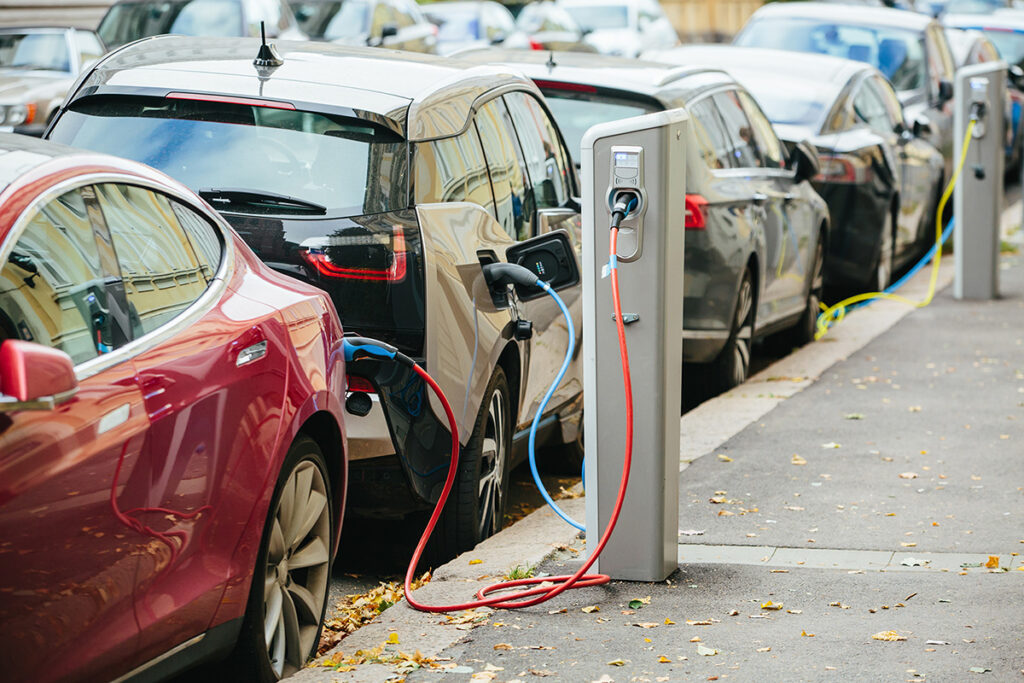Despite recent reports of a slowdown in the rate of growth, the increased demand for electric vehicles (EVs) over the last year or two continues to revolutionize the automotive industry at an accelerating pace. The latest data show that EVs accounted for 8 percent of all new cars sold or leased in Q2 of 2024, an increase of over 11 percent from the previous year. Data from the same quarter also showed Tesla’s EV market share dipping below 50 percent for the first time. Tesla’s declining market share reflects the extent to which manufacturers across the world are actively pursuing the transition from gas-powered cars to gain footing in this increasingly competitive market. Zeroing in on recent EV-related developments in Texas helps highlight the fact that economic developers must attend to this market growth on three fronts: the pursuit of federal funding, the opportunities surrounding EV manufacturing and the supply chain, and the construction of charging infrastructure.
The Biden administration has set an ambitious target for EVs to represent one-half of all new vehicle sales by 2030. As part of this commitment, the administration has distributed significant funds to support the EV industry. The Infrastructure Investment and Jobs Act announced $7.5 billion to build out a nationwide network of 500,000 electric vehicle chargers, with a particular target of rural areas. The Domestic Manufacturing Auto Conversion Grants program, part of the Inflation Reduction Act, amounted to $1.7 billion to support the conversion of endangered auto manufacturing and assembly plants across eight states. The National Electric Vehicle Infrastructure Formula program, overseen by the Federal Highway Administration, has allocated more than $400 million to Texas alone to fund “the acquisition, installation, and network connection of EV charging stations to facilitate data collection, access, and reliability” through 2026—the most of any state. The disbursement of these funds is accompanied by an aggressive move to increase manufacturing in the US and away from China, including significantly increased tariffs. Such onshoring efforts are expensive, however. According to an analysis from Bloomberg, building the factories needed to meet domestic demand for battery components, battery metals, solar, lithium-ion batteries, and electrolyzers by 2030 would cost over $100 billion. Federal efforts will continue to help drive increased domestic EV production and consumer adoption in the long-term, and economic developers must prepare the communities they serve to compete for these opportunities.
The local economic impact of the EV manufacturing industry can be significant in a number of ways. The clearest recent example is Tesla’s Gigafactory in Austin, Texas. The company received $14 million in tax rebates over ten years from Travis County, with an expected workforce of over 5,000 employees (although the recent round of significant layoffs will require Tesla to bounce back to maintain compliance with jobs stipulations in the incentives structure). The company’s talent needs will be answered in part by the efforts of institutions like Texas State Technical College, which created a Tesla-specific training program that TIP has previously profiled. And Tesla is only the beginning. Stacy Schmitt, Opportunity Austin’s senior vice president of communication and external affairs, noted that Tesla has a “vast network of suppliers” and that “as national trends forecast a slower yet steady growth, the company is positioned to streamline operations and discover innovative solutions for themselves and likely also their supply chain.” This ripple effect has already started. Hanwha, a South Korean vehicle liner manufacturer that provides products to Tesla, has announced $100 million in capital investment in nearby Williamson County. Although the Gigafactory in Austin is a “unicorn” example that is unlikely to be replicated in many communities, the broader implications of EV-related supply chain integration merit close consideration. Discussions about tax incentives can prove contentious among residents, politicians, and even economic developers, yet these kinds of attraction and expansion tools will continue to be an important piece of the site selection process for the American auto industry.
One of the most pressing challenges with widespread EV adoption for consumers is infrastructure, specifically the lack of sufficient charging stations. According to figures reported by the Department of Energy, the majority (64 percent) of EV charging is conducted at home. However, access to a reliable and affordable public network for charging on the go is essential. Some incentives exist that facilitate charger installation, but there are still gaps in the patchwork of programs and their implementation. At the state level, Texas is attempting to combat those gaps in its Department of Transportation’s Electric Vehicle Infrastructure Plan, published in September 2023. Describing the rapid rise in EV ownership and related consumer requirements, the plan details action items to sustain this market growth in Texas, including grants for operations and maintenance and charging equipment service providers, as well as the gathering and public dissemination of updated data on charging station locations and usage rates. It is efforts like these that will continue to drive the industry forward.
Economic developers cannot afford to underestimate the impacts of rising EV demand and production. While not every region is positioned to attract manufacturing activity related to EV production, communities across the country can benefit from the electrification trend by integrating EV-focused strategies into their work plans. Pursuing federal and state grant opportunities to expand charging infrastructure, designing policies and incentives that support the transition to EVs for consumers and commercial fleets, and ensuring that workers have the skills needed to adapt to this change are just a few examples.



